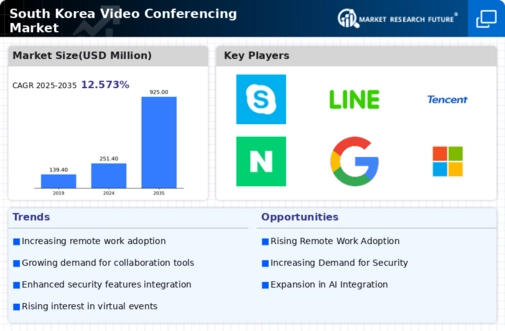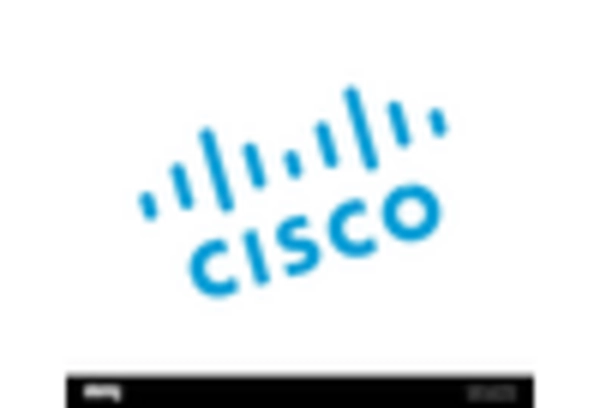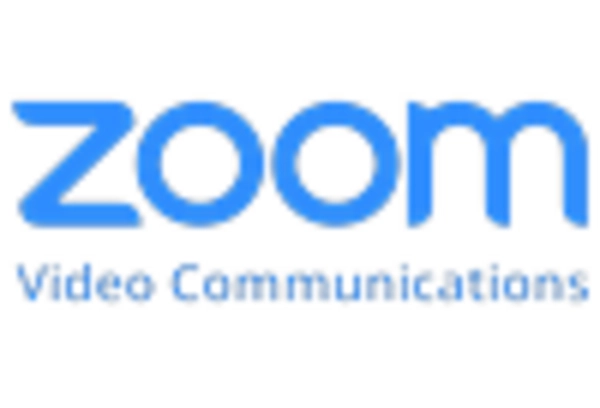The video conferencing market in South Korea is characterized by a dynamic competitive landscape, driven by rapid technological advancements and an increasing demand for remote collaboration solutions. Major players such as Zoom Video Communications (US), Microsoft (US), and Cisco Systems (US) are at the forefront, each adopting distinct strategies to enhance their market presence. Zoom Video Communications (US) focuses on continuous innovation, particularly in user experience and security features, while Microsoft (US) leverages its existing ecosystem, integrating video conferencing capabilities into its Office 365 suite. Cisco Systems (US) emphasizes enterprise solutions, targeting large organizations with robust security and scalability, thereby shaping a competitive environment that is increasingly reliant on technological differentiation and user-centric offerings.
Key business tactics within this market include localizing services and optimizing supply chains to meet regional demands. The competitive structure appears moderately fragmented, with several players vying for market share, yet the influence of key players remains substantial. This fragmentation allows for niche players to emerge, catering to specific industry needs, while larger companies consolidate their positions through strategic partnerships and acquisitions.
In October 2025, Zoom Video Communications (US) announced a partnership with a leading South Korean telecommunications provider to enhance its service offerings in the region. This strategic move is likely to bolster Zoom's market penetration by leveraging local infrastructure and expertise, thereby improving service reliability and customer satisfaction. Such partnerships may also facilitate the introduction of tailored solutions that resonate with local businesses, further solidifying Zoom's competitive edge.
In September 2025, Microsoft (US) unveiled a new AI-driven feature within its Teams platform, aimed at enhancing virtual collaboration through real-time language translation. This innovation not only addresses the diverse linguistic landscape of South Korea but also positions Microsoft as a leader in integrating advanced technologies into video conferencing. The strategic importance of this development lies in its potential to attract a broader user base, particularly among multinational corporations operating in the region.
In August 2025, Cisco Systems (US) expanded its Webex platform by incorporating advanced analytics tools designed to optimize meeting experiences. This enhancement is indicative of Cisco's commitment to providing data-driven insights that can improve user engagement and productivity. By focusing on analytics, Cisco aims to differentiate itself in a crowded market, appealing to organizations that prioritize measurable outcomes from their video conferencing solutions.
As of November 2025, current trends in the video conferencing market are heavily influenced by digitalization, sustainability initiatives, and the integration of AI technologies. Strategic alliances are increasingly shaping the competitive landscape, as companies recognize the value of collaboration in enhancing service offerings and expanding market reach. Looking ahead, competitive differentiation is expected to evolve, with a notable shift from price-based competition towards innovation, technological advancements, and supply chain reliability. This transition underscores the importance of adaptability and forward-thinking strategies in maintaining a competitive advantage.

















Leave a Comment